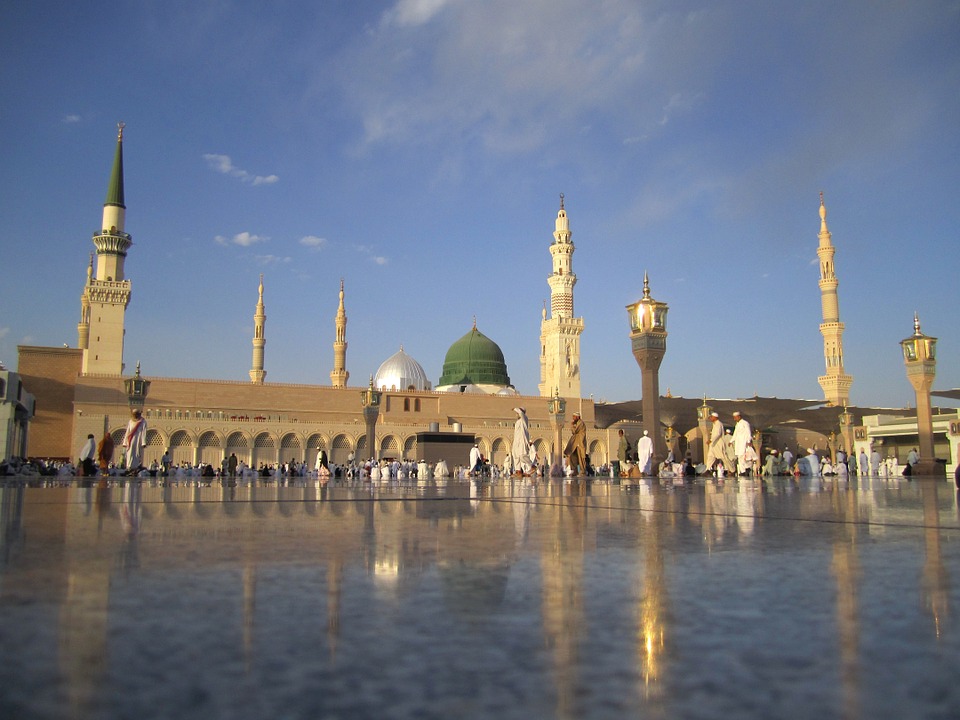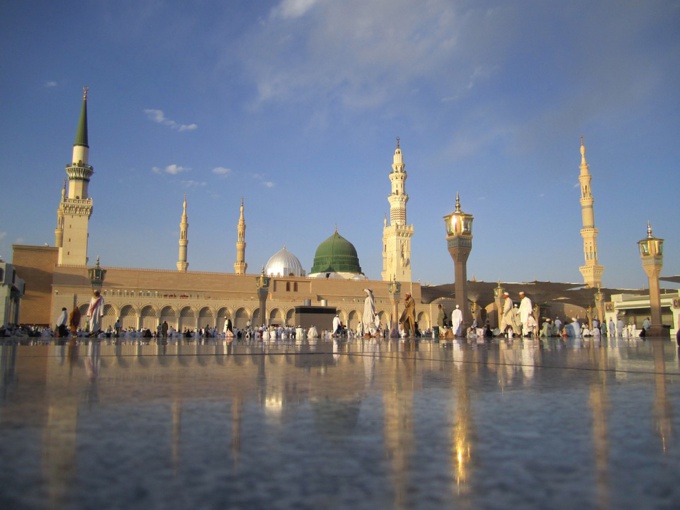The Saudi authorities want to allocate several hundred kilometers for the special tourist zone on the west coast of the Arabian Peninsula. The climate in this region is similar to that in the Egyptian resorts of Marsa-Alam and Hurghada. The project will cover 34 thousand square meters on the shore of the Red Sea, between the cities of Umluzh and Al-Vaih, including about 50 islands.
The resort will be built in accordance with "high international standards" and is designed for "wealthy travelers from all over the world", reads the project documentation, quoted by Bloomberg.
The resort will become a kind of tourist kingdom in the country with more free rules of conduct. Details, however, have not been specified yet.
The project implies that the resort area will be regulated as a "semi-autonomous region" with its "independent laws and regulatory framework, developed and managed by a private committee." Most likely, there will be no ban on alcohol consumption, no strict dress code, and women will be allowed to drive cars in the resort area, unlike the rest of the territory of the Kingdom of Saudi Arabia.
The relaxation will also affect the visa regime: the entry permit will not be required at all, or will be issued in advance via the Internet.
The project will be developed and financed by the Sovereign Wealth Fund of Saudi Arabia in conjunction with international companies. The development is expected to start in the third quarter of 2019. The first stage, including construction of hotels and apartments, creation of infrastructure - air, land and sea transport hubs, will be completed by the end of 2022.
The project’s main goal is to reduce the dependence of the Saudi Arabian economy on oil.
Saudi Arabia's oil sector accounts for about 87% of budget revenues, 42% of gross domestic product (GDP) and 90% of export earnings.
The collapse of world oil prices hit the Saudi economy hard. The kingdom’s GDP growth rate has significantly decreased. In 2014, the Kingdom's GDP grew by 3.7%, then in 2016 this figure added only 1.7%. This is the worst indicator since 2010.
So far, the tourism industry in Saudi Arabia accounts for about 3.3% of GDP (data of the World Council for Tourism and Travel for 2016). For comparison, tourism accounts for 5.2% of GDP in the neighboring UAE, and 4.9% of GDP - in Jordan.
At the same time, Saudi Arabia outperformed its Middle Eastern competitors in absolute terms. In 2016, tourism contributed $ 21 billion to the Kingdom's GDP against $ 18.7 billion from the UAE.
In terms of investment in the tourism sector, Saudi Arabia received $ 28.6 billion (14.7% of the total volume of capital investments) in 2016, while this figure was $ 7.1 billion (or 7% of all capital investments in the country’s economy) in the UAE. The indicator amounted to $ 3.8 billion on the average in the Middle East region.
Religious tourism is still the main growth driver of the kingdom's tourism industry. Every year millions of Muslims from all over the world go to Saudi Arabia with a pilgrimage.
In 2016, the main Muslim shrines - the cities of Mecca and Medina - were visited by more than 19 million pilgrims, including both residents of Saudi Arabia and foreigners. At the end of 2016, religious tourism brought the kingdom almost $ 6 billion.
By 2025, the number of pilgrims will grow to 30 million, analysts from the Economic Chamber of Jeddah (a city in the west of Saudi Arabia and the main transport hub for pilgrims performing hajj), believe.
"Although the number of religious tourists coming to the kingdom has doubled in the last 10 years, Saudi Arabia's potential in this segment has not yet been exhausted," says one of the think tank’s reports.
However, the growth of the tourist flow is hampered by several factors. There is a shortage of high-quality hotels in the main cities of Saudi Arabia: 43% of hotels in Mecca and 46% in Medina are three-star hotels. Complicated process of obtaining a visa is yet another obstacle.
In addition, Saudi Arabia does issue tourist visas. Pilgrims receive group visas, and other travelers are asked to arrange transit, business, work or family visa.
Women have the right to enter the kingdom only accompanied by a male relative.
Another deterrent was the complex geopolitical and economic situation in the region.
The main countries - suppliers of tourists for the kingdom are the kingdom’s neighbors in the Arabian Peninsula and other countries of the Middle East and North Africa with a predominantly Muslim population.
However, geopolitical conflicts and economic instability have severely damaged mobility and purchasing power of the population of these countries.
In 2016, the tourist flow for hajj was the lowest for the last 10 years. The number of pilgrims was only 1.86 million people, 41% lower than in 2012.
In 2017, STR analytical agency drew attention to the fact that profitability of Mecca’s hotels during the Muslim holy month of Ramadan (from May 26 to June 25, 2017) decreased by 8.8%.
The reason, according to STR experts, lies in the fact that a number of countries, such as Egypt and Indonesia, faced a significant devaluation of the national currency against the Saudi riyal. It turned out that pilgrim trips to Saudi Arabia have become too expensive for inhabitants of these countries.
With the help of a new project to create a free tourist zone, Saudi Arabia can try to attract ordinary, secular tourists, regardless of their religion. So far, however, the prospects for this initiative are vague.
source: bloomberg.com
The resort will be built in accordance with "high international standards" and is designed for "wealthy travelers from all over the world", reads the project documentation, quoted by Bloomberg.
The resort will become a kind of tourist kingdom in the country with more free rules of conduct. Details, however, have not been specified yet.
The project implies that the resort area will be regulated as a "semi-autonomous region" with its "independent laws and regulatory framework, developed and managed by a private committee." Most likely, there will be no ban on alcohol consumption, no strict dress code, and women will be allowed to drive cars in the resort area, unlike the rest of the territory of the Kingdom of Saudi Arabia.
The relaxation will also affect the visa regime: the entry permit will not be required at all, or will be issued in advance via the Internet.
The project will be developed and financed by the Sovereign Wealth Fund of Saudi Arabia in conjunction with international companies. The development is expected to start in the third quarter of 2019. The first stage, including construction of hotels and apartments, creation of infrastructure - air, land and sea transport hubs, will be completed by the end of 2022.
The project’s main goal is to reduce the dependence of the Saudi Arabian economy on oil.
Saudi Arabia's oil sector accounts for about 87% of budget revenues, 42% of gross domestic product (GDP) and 90% of export earnings.
The collapse of world oil prices hit the Saudi economy hard. The kingdom’s GDP growth rate has significantly decreased. In 2014, the Kingdom's GDP grew by 3.7%, then in 2016 this figure added only 1.7%. This is the worst indicator since 2010.
So far, the tourism industry in Saudi Arabia accounts for about 3.3% of GDP (data of the World Council for Tourism and Travel for 2016). For comparison, tourism accounts for 5.2% of GDP in the neighboring UAE, and 4.9% of GDP - in Jordan.
At the same time, Saudi Arabia outperformed its Middle Eastern competitors in absolute terms. In 2016, tourism contributed $ 21 billion to the Kingdom's GDP against $ 18.7 billion from the UAE.
In terms of investment in the tourism sector, Saudi Arabia received $ 28.6 billion (14.7% of the total volume of capital investments) in 2016, while this figure was $ 7.1 billion (or 7% of all capital investments in the country’s economy) in the UAE. The indicator amounted to $ 3.8 billion on the average in the Middle East region.
Religious tourism is still the main growth driver of the kingdom's tourism industry. Every year millions of Muslims from all over the world go to Saudi Arabia with a pilgrimage.
In 2016, the main Muslim shrines - the cities of Mecca and Medina - were visited by more than 19 million pilgrims, including both residents of Saudi Arabia and foreigners. At the end of 2016, religious tourism brought the kingdom almost $ 6 billion.
By 2025, the number of pilgrims will grow to 30 million, analysts from the Economic Chamber of Jeddah (a city in the west of Saudi Arabia and the main transport hub for pilgrims performing hajj), believe.
"Although the number of religious tourists coming to the kingdom has doubled in the last 10 years, Saudi Arabia's potential in this segment has not yet been exhausted," says one of the think tank’s reports.
However, the growth of the tourist flow is hampered by several factors. There is a shortage of high-quality hotels in the main cities of Saudi Arabia: 43% of hotels in Mecca and 46% in Medina are three-star hotels. Complicated process of obtaining a visa is yet another obstacle.
In addition, Saudi Arabia does issue tourist visas. Pilgrims receive group visas, and other travelers are asked to arrange transit, business, work or family visa.
Women have the right to enter the kingdom only accompanied by a male relative.
Another deterrent was the complex geopolitical and economic situation in the region.
The main countries - suppliers of tourists for the kingdom are the kingdom’s neighbors in the Arabian Peninsula and other countries of the Middle East and North Africa with a predominantly Muslim population.
However, geopolitical conflicts and economic instability have severely damaged mobility and purchasing power of the population of these countries.
In 2016, the tourist flow for hajj was the lowest for the last 10 years. The number of pilgrims was only 1.86 million people, 41% lower than in 2012.
In 2017, STR analytical agency drew attention to the fact that profitability of Mecca’s hotels during the Muslim holy month of Ramadan (from May 26 to June 25, 2017) decreased by 8.8%.
The reason, according to STR experts, lies in the fact that a number of countries, such as Egypt and Indonesia, faced a significant devaluation of the national currency against the Saudi riyal. It turned out that pilgrim trips to Saudi Arabia have become too expensive for inhabitants of these countries.
With the help of a new project to create a free tourist zone, Saudi Arabia can try to attract ordinary, secular tourists, regardless of their religion. So far, however, the prospects for this initiative are vague.
source: bloomberg.com



















